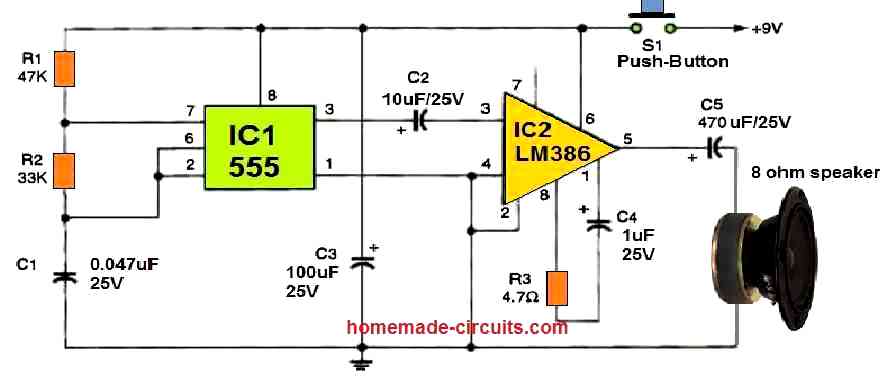The discussed circuit produces sounds which resembles to an authentic buzzer. It operates using just two integrated circuits and a minimal number of components.

When you press the switch S1, the capacitor C1 starts to get power through the resistors R1 and R2. This action sets off pin 2 of the 555 timer, IC1.
Then IC1 makes pin 7 go low, which makes the capacitor lose its charge through R2. This process keeps going as long as you keep S1 pressed.
The signal from IC1 (at pin 3) changes back and forth with the capacitors charge and discharge cycles, creating a sound wave for IC2. IC2 is an LM386 audio amplifier which makes the sound louder.
You use a speaker to copy the sound from IC1 that sounds just like a real buzzer. If you want the buzz to be lower pitched, try using a bigger capacitor for C1 like 0.1 uF.
To make the setup more stable, you can connect a 47 uF capacitor from pin 7 of IC2 to the ground.
Leave a Reply